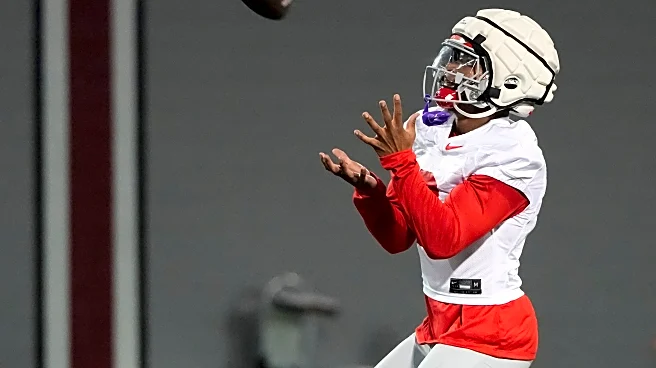What's Happening?
The 'lock-in season' trend, gaining traction from September through December, encourages individuals to focus on fitness, financial, or career goals. This trend, popularized on social media, is seen as a repackaging of the corporate calendar's fourth quarter. Khadyajah Jenkins, a former tech recruiter and current doctoral student at Penn State, notes that this period is ideal for 'intentional ideation' of future plans, such as securing promotions or expanding platforms. Executive coach Allie Stark describes the season as a time of increased discipline and momentum, with many people striving to achieve their annual goals before the year ends. Career coach Amanda Augustine highlights that young professionals are prioritizing career growth by updating LinkedIn profiles, tracking achievements, and enhancing skills, driven by a challenging labor market.
Why It's Important?
The 'lock-in season' trend reflects a broader societal push towards maximizing personal and professional growth, especially in a competitive labor market. As workers seek to enhance their job security, this trend could lead to increased productivity and career advancement. However, the intense focus on achieving goals within a short timeframe may also contribute to burnout, as individuals push themselves to meet high expectations. The trend underscores the importance of balancing ambition with well-being, as the pressure to succeed can have significant mental health implications. Employers and career coaches may need to address these challenges by promoting sustainable work practices and providing support for employees navigating this demanding period.
What's Next?
As the 'lock-in season' progresses, individuals and organizations may continue to adapt strategies to maximize productivity while mitigating burnout risks. Employers might implement wellness programs or flexible work arrangements to support employees during this intense period. Career experts could offer guidance on setting realistic goals and maintaining work-life balance. The trend may also influence social media platforms, as users share their progress and experiences, potentially shaping future workplace cultures. Observing the outcomes of this trend could provide insights into effective career development practices and inform future approaches to managing employee well-being.











